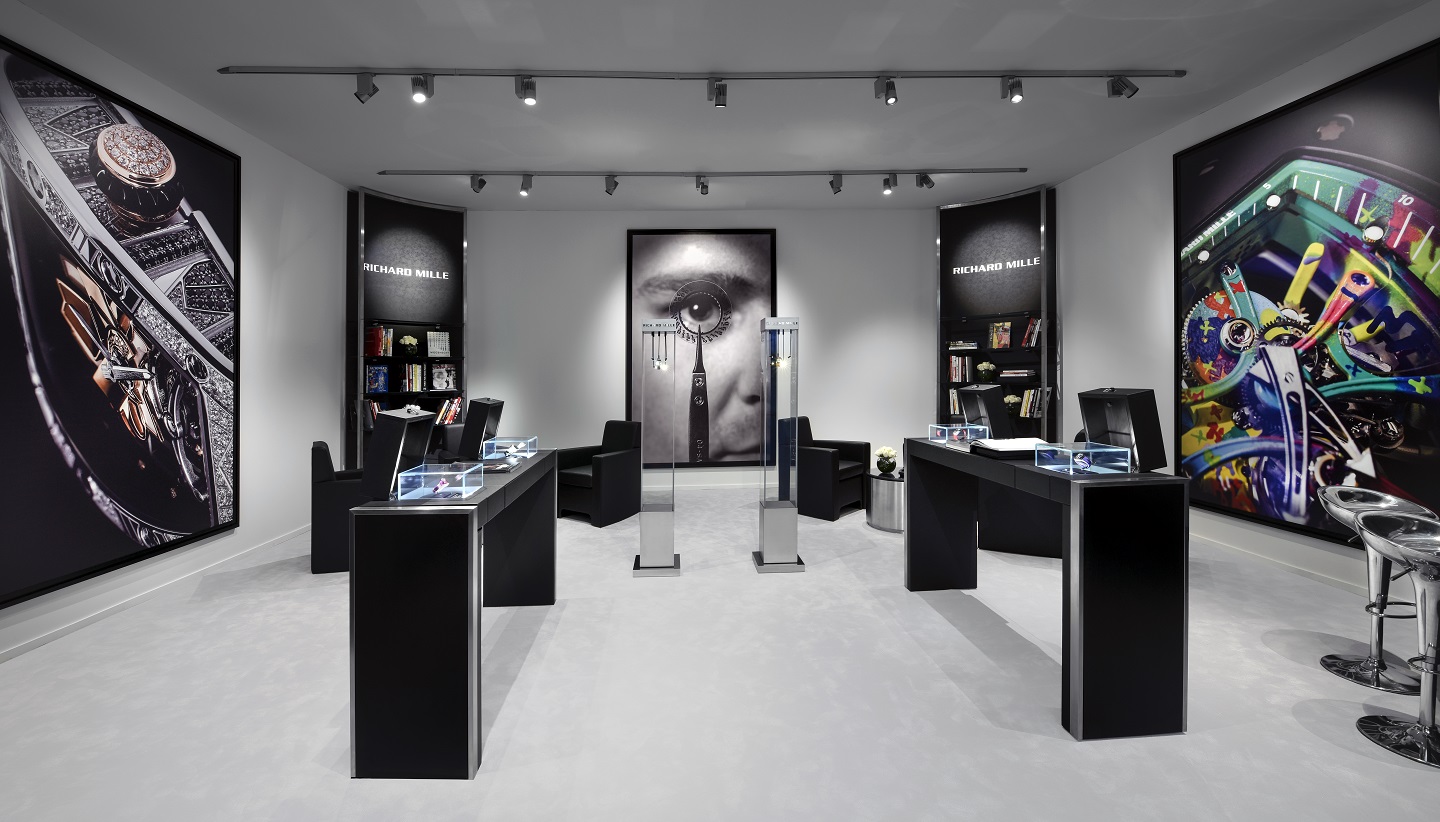
Richard Mille’s newly signed collaboration with the Frieze Art Fair (Photo: Richard Mille)
Richard Mille’s approach to watchmaking has always centred on releasing the watch from its restricted role as a mere tool for timekeeping, augmenting and extending its visual potential using elements of design, art, sculpture and architecture. In this way, its timepieces make full use of three-dimensional arching spaces and volumes for the watchcase and movement. Even the layout and finish of each mechanical part are treated as essential, visually and stylistically, within the scope of the company’s holistic approach to watchmaking.
“Of course, a watch must be an excellent timekeeping device, with the highest chronometric results achievable,” says the brand’s founder, Richard Mille. “Nevertheless, I see no reason why it should not be fascinating and multi-layered in its visual expressivity, both inside and out, in the same way that a great work of art offers complex layers of comprehension for each viewer. It is not far removed from the world of miniaturist painting, where an entire world can open up within a very confined area of just a few square centimetres.”
That dedication to artistic excellence led to Richard Mille’s newly signed collaboration with the Frieze Art Fair, the world’s leading platform for modern and contemporary art for scholars, connoisseurs, collectors and the general public. Celebrating its short yet vibrant and contemporary history, the watchmaker’s presence at Frieze Masters has brought together — for the first time in the UK — a museum-level overview of some of the most exceptional, rare and currently unavailable timepieces that have been generously loaned by private collectors.
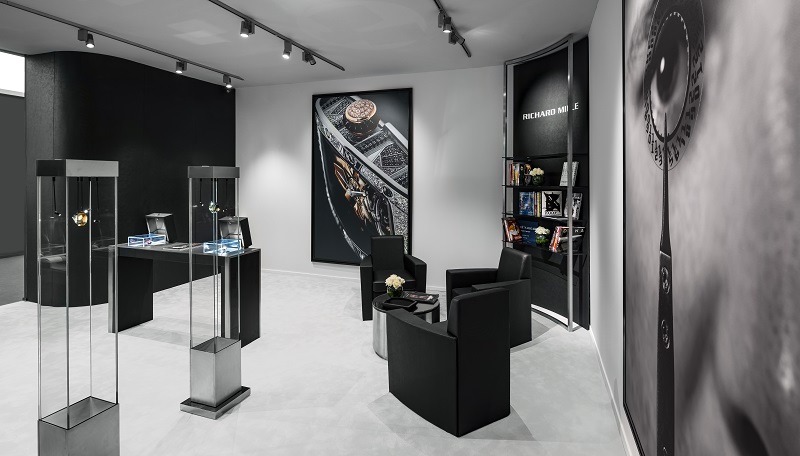
Central to the exhibition is a new timepiece that is the result of Richard Mille’s collaboration with French street artist Cyril Kongo. Although one might assume that the world of haute horlogerie is far removed from that of street art, the watchmaker has often established unexpected partnerships based on its founder’s varied and far-reaching interests. “I deliberately refuse to be confined by the closed, conformist world of luxury watches. I seek to open up the profession to the broadest spectrum of artistic expression possible and this philosophy has led us to establish partnerships that may appear somewhat surprising at first glance,” Mille explains.
The entire front and back of the
RM 68-01 Tourbillon, a contemporary horological artwork, have been transformed into a riot of airbrushed, rainbow-like hues. Since the airbrushing includes all moving parts, the watch transforms into a kinetic painting, constantly changing visually as it tells the time. With Richard Mille’s visionary aesthetics and Kongo’s skill in miniaturising his large-scale working methods — which normally involve an area the size of an apartment building — the result is a timepiece that has been elevated to the realm of fine art. Also on display is the RM 19-02 Tourbillon Fleur, which has a magnolia in its case, and the RM 71-01 Automatic Tourbillon Talisman that melds jewellery and watchmaking.
Flower power
The RM 19-02 Tourbillon Fleur epitomises the traditions of horological artistry in a vibrant expression of watchmaking distinctive to Richard Mille’s vision of timekeeping. A special flower, the magnolia, was chosen for the centrepiece as its existence marks millions of years on earth, even before the emergence of bees in the environment, flowering in an endless cycle of birth and regeneration. The magnolia’s delicate appearance is a sharp contrast with its strong organic structure and resilience in difficult environments.
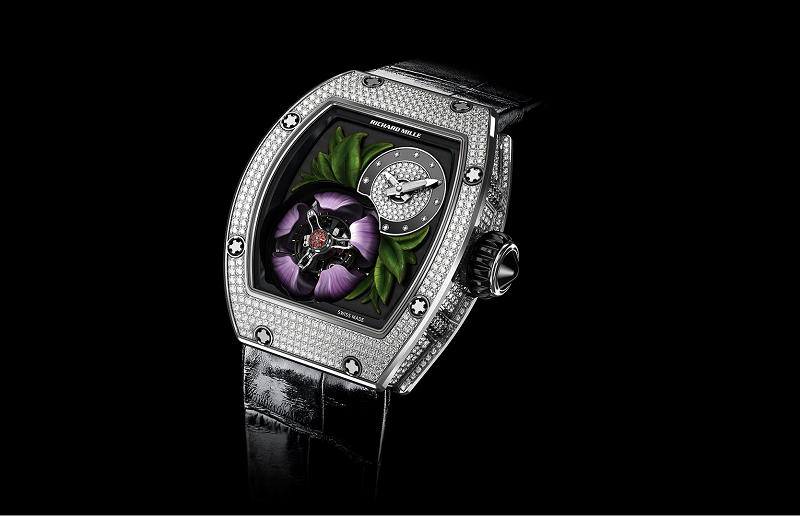
At the lower left of the dial, a magnolia surrounds a flying tourbillon escapement with five delicate petals created and coloured by hand. Working either in passing or on demand using the pusher at 9 o’clock, the magnolia opens and closes with rhythmic regularity in a delicate kinetic ballet. However, if you look closely, you will see that Richard Mille has chosen to imitate nature in the most exquisite way possible. When the magnolia opens, the entire flying tourbillon with its stone-set stamen moves 1mm upwards — an exact copy of the natural motion of the flower, arching upward towards the sun to increase its chances of pollination.
For those interested in the technical mastery behind this unique grade 5 titanium tourbillon calibre, a complex mechanism comprising five levers surrounds the underside of the petals, and yet another system combined with a long pinion is used to raise the flying tourbillon and stamen upwards within the flower’s circumference — all using energy supplied by a separate, second winding barrel. As an added attention to detail, it is even possible to adjust the opening and closing cycles.
A talisman of good fortune
The RM 71-01 Automatic Tourbillon Talisman has removed the distinction between jewellery and its case. The movement, dial and case maintain an aesthetic, technical and visual dialogue in each version. “Yet, to truly put the launch in a class of its own, we needed to combine the exceptional design with technical prowess, hence the brand’s very first automatic tourbillon movement! It is not the existence of this specificity that is of principal concern so much as the extraordinary technical characteristics — the performance, reliability and breathtaking finishes,” explains Mille.
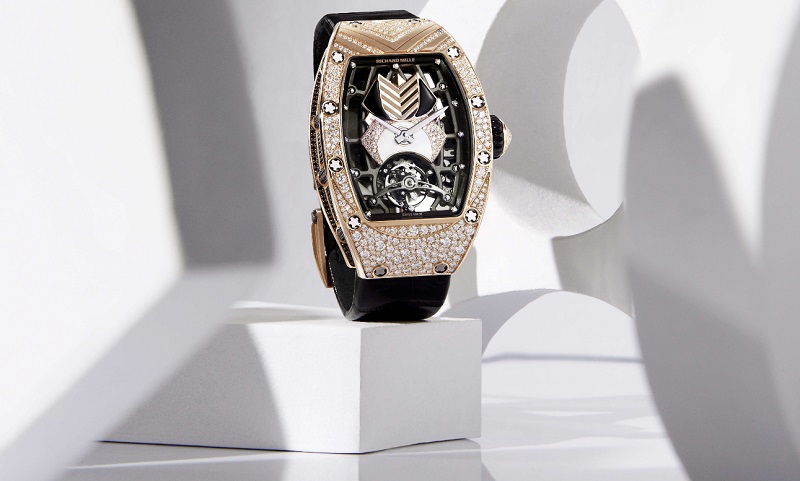
With this horological tourbillon, the brand introduces the Calibre CRMT1 — its eighth, in-house calibre. The baseplate protecting the tourbillon’s rotation remains open to preserve transparency. Skeletonised and tonneau-shaped, with a thickness no greater than 6.2mm and a weight of just 8g, the Calibre CRMT1 — housed in a case of white or red gold — is clothed in titanium.
The RM 71-01 Automatic Tourbillon Talisman radiates in all directions, but by no means every which way. Each segment of stones systematically extends or echoes one of the movement’s internal vectors, while the 10 dials crowns the central portion of the tourbillon. The dials, a mere 0.9mm in thickness, is set by hand. This component is an immense technical challenge because of the many different finishing operations required — sandblasting, polishing … and all this in a very small area arranged on several levels. The bezel is adorned with diamonds in permutations that vary in the number, shape and size of the stones according to the version. The caseback is engraved with matt bands that contrast strikingly with the brilliance of the stones and the high polish of all other surfaces.
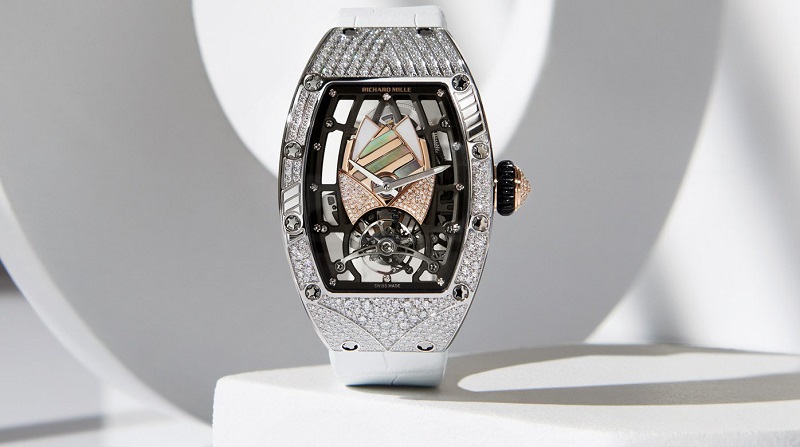
This breathtaking collection of ladies’ tourbillon watches employs a jewellery design that matches the brand’s mechanical sophistication, allowing the meeting of complementary contrasts: traditional expertise and new technologies; manual virtuosity and extreme precision. Just as its name suggests, its certain the 50 discerning owners of the RM 70 01 Automatic Tourbillon Talisman will enjoy the good fortune that each of these highly coveted, magical timepieces will bring.
Going graffiti
The RM 68-01 Tourbillon is the outcome of Mille’s desire to introduce contemporary art in haute horlogerie. Indeed, this tourbillon calibre is more than a watch insofar as it serves as a canvas for the inspiration and creativity of Kongo. Never before has a work of art taken shape on the bridges and baseplate of a watch, becoming a truly integral part of the timepiece. Richard Mille and Kongo have succeeded in taking an art, essentially associated with large-scale urban murals, and translating it for the horological world of micromechanics and precision, thereby making a leap from city walls to bridges, baseplates and sapphire dials of watches.
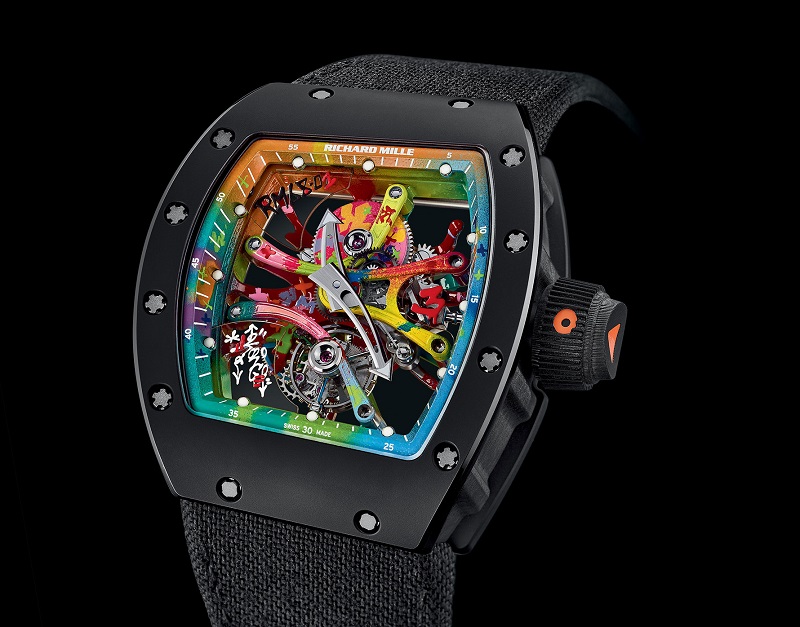
It took more than a year to develop the painting technique used by Kongo. A special airbrush was developed to allow the artist to spray his colours with the utmost delicacy, one droplet at a time. To avoid jeopardising the calibre’s equilibrium, the weight of the paint had to be determined beforehand. This significant challenge involving all the teams collaborating on the RM 68-01 Tourbillon project resulted in the creation of a unique palette of brightly coloured indelible paints, which adhere perfectly to the titanium components and can endure assembly and dismantling.
On the back of the watch, we see the central form of the tourbillon movement’s baseplate radiating outwards like a splash of paint that has been physically thrown against a wall, while from the front, the different movement bridges can be seen arcing in different directions like the wild brushstrokes found in street art. Housed in a case comprising an NTPT Carbon caseband and black ceramic bezels, the asymmetric design tapers in two directions — in thickness from 9 to 3 o’clock and in height between 12 and 6 o’clock. The RM 68-01 Tourbillon combines contemporary mechanical and visual arts in an exceptional expression of 21st-century timekeeping.
This article first appeared on Oct 22, 2018 in The Edge Malaysia.


